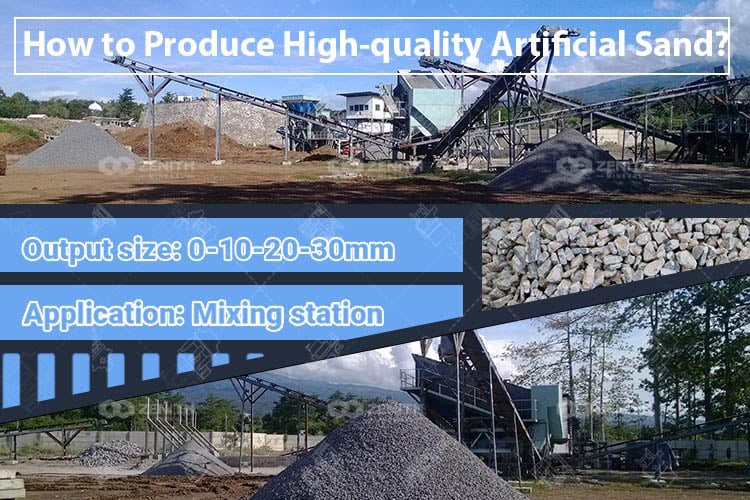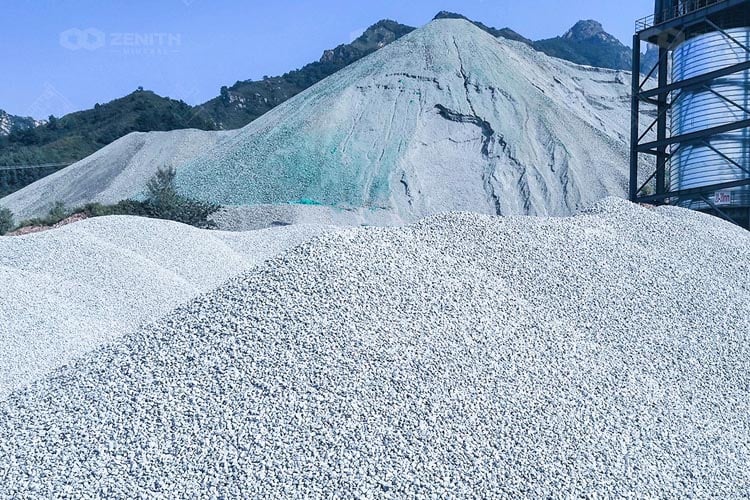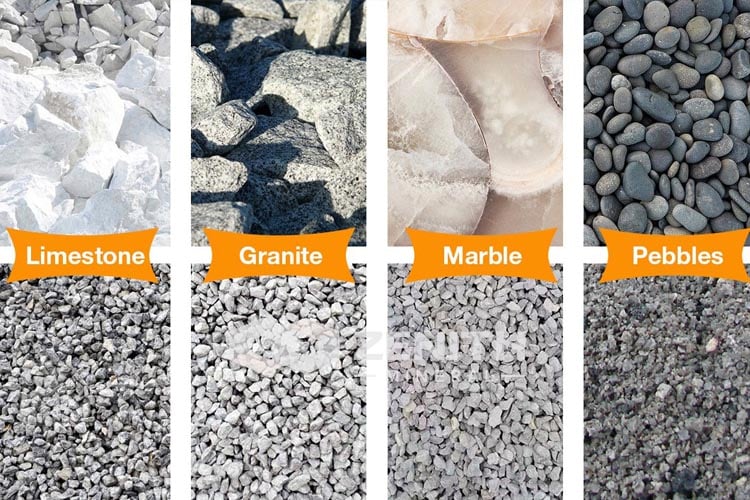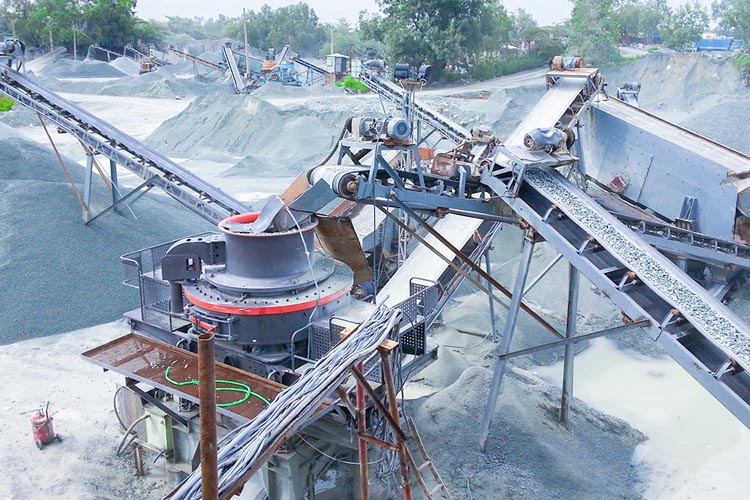Developing high-quality artificial sand with stable output capacity and quality to replace river sand can not only solve the imbalance between supply and demand of sand and gravel aggregate in construction, but also realize the recycling of solid waste. This means a lot to the green sustainable development.

At present, the artificial sand on the market is affected by the parent rock and production process, and may have quality problems such as poor grading, excessive stone powder content, and too many grain edges and corners, which have a great impact on the performance of concrete.
First, the grading of artificial sand is characterized by ‘more sand in zone I and zone III, less sand in Zone II’. Among them, the screen residue of particle size larger than 2.360mm is up to 40% and the screen residue of particle size smaller than 0.075mm is up to 15%. Poor grading of artificial sand leads to large void ratio between aggregates, and the strength and working performance of concrete is also poor.

Secondly, the content of stone powder is too high, which leads to quality problems such as the strength of concrete reduces and the shrinkage deformation increases.
Thirdly, the sand particles have many edges and corners. At the same dosage of slurry, the workability, fluidity and compactness of artificial sand concrete are worse than that of river sand concrete with rounded particles.
In order to get concrete with high quality, we need high quality artificial sand. Focusing on the main quality problems of artificial sand, we should build a high-quality artificial sand production and quality and environmental protection control system from the aspects of optimizing mines, improving production processes, and environmental protection etc.
The quality of parent rock determines the quality of machine-made sand from the source. In the selection of sand mine, it is necessary to do a good job of investigation, choose the mine with thin soil layer, less mud in the interlayer, high strength of the parent rock and good rock integrity.
The parent rock should not have potential alkali-aggregate reaction activity, and should choose limestone, dolomite, granite, basalt and other rocks that is clean, hard, and has no wind fossils.

Sandstone: with high quartz content, it is widely used in sand and gravel aggregate production line, and the problem of stone powder should be solved in production.
Quartz sandstone: Quartz sandstone is a good raw material for machine-made sand production, whether in strength or grain type can reach or even better than natural sand.
River pebble: river pebble is also a high-quality raw material for sand making. It is a good choice to replace natural sand in terms of strength, particle size and color.
Limestone: It can be used as raw material for sand and aggregate production and the stone powder can also be collected.
Basalt: mixed in the concrete, sand made of basalt can reduce the weight of the concrete, but not reduce the strength, and has the characteristics of sound insulation and heat insulation, which is a good aggregate for lightweight concrete in high-rise buildings.
Granite: granite with high quartz content and low sulfide content is a good raw material for sand production, but the problem of powder should be solved.
Some artificial sand production lines on the market adopt the production process of "two-stage crushing +screening", lacking the adjustment of aggregate grading, control of stone powder content and particle shape.
To solve the above mentioned problems, by improving the process, the 5S process of "double desliming, double impact crusher, double vertical shaft impact crusher, double circulation and double powder separation" is adopted to ensure that the product quality is qualified and the performance is stable; The problems of dust, water pollution and waste in traditional processes are solved through measures of air separation and dust removal, closed silos of semi-finished and finished product, and waste recycling.

5 stage crushing and 2 stage shaping
Firstly, adopt jaw crusher to crush the parent rock for the coarse crushing to reduce the diameter of the parent rock and reduce the production pressure of impact crusher;
And then, adopt impact crusher to crush the raw material for the second time (medium crushing)by impacting force, so as to further develop the aggregate micro cracks generated by jaw crusher, and finally the aggregate will be crushed again from the micro cracks, completing the second crushing and the first shaping process of the aggregate;
Finally, adopt vertical shaft impact crusher to crush the aggregate for the third time (fine crushing) and shaping the aggregate for the second time (‘rock on rock’ or ‘rock on iron’ working principle).
Two stage desliming
Before coarse crushing, the rod feeder and desliming screen are used to conduct the first desliming treatment of the parent rock and soil with a particle size less than 30mm, and the second desliming treatment of the aggregate with a particle size less than 10mm is carried out before medium crushing, to remove the soil and stone debris in the aggregate, and ensure that the MB value of machine-made sand is less than 0.5.
Grading adjustment
The circulating screening system is set up in the medium and fine crushing stage, which can adjust the silo through GSP to make some aggregates return through the circulating system to be re-crushed into smaller particles, adjust the production proportion of aggregates with different particle sizes as required, and then adjust the content of small particles through air separation and powder control, so as to solve the problem of ‘more sand in zone I and zone III, less sand in Zone II’
Powder control by air separation
The crushed aggregate is sent to the gravity air separation for powder control for the first time, so that the stone powder content is controlled at about 10%. Before the finished sand enters the silo, adjust the powder control again by adjusting the wind pressure according to requirements, so as to meet the requirements of different strength concrete on the content of machine-made sand powder.
Humidifying the sand automatically
After the completion of the air separation process, the finished artificial sand is automatically humidified to control the moisture content at 2.5%~3.5%. The stable moisture content is convenient for concrete production and quality control, can effectively avoid dust during production and transportation, and prevent aggregate segregation during loading, unloading and transportation.
In terms of mining, environmental protection, restoration and treatment, green reclamation, energy conservation and emission reduction, water and soil conservation, geological disaster prevention and other work should be done well according to the construction requirements of green mines.
High quality artificial sand can improve the working performance of concrete, improve the compressive strength of concrete and improve the impermeability of concrete. If you want to produce high quality artificial sand, contact ZENITH about more information for the crushing and sand making equipment!

the front of the production line adopts jaw crusher + desilting screening + pre-screening + cone crusher + vertical shaft impact crusher for shaping+ finished product screening, the back of the production line adopts tower-like sand making process.

For sand production plant, the process layout directly affects the production effect. A good production process must fully consider the rationality, reliability, advancement, economy and mutual matching of the process.

ith the exhaustion of natural sand and gravel aggregate resources and the intensification of government control, it has become an inevitable trend for the industry to replace natural sand and gravel aggregates with machine-made sand and gravel aggregates.
Fill your requirements here, and we'll send the custmized solution and quotation to you by the reserved contact information.